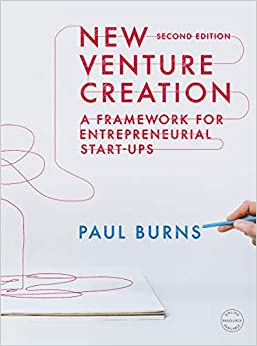Question
Everyone has witnessed quite volatile and anxious financial markets around the globe since the beginning of the year. Individual clients have fears to invest into
Everyone has witnessed quite volatile and anxious financial markets around the globe since the beginning of the year. Individual clients have fears to invest into any portfolios due to high uncertainty in almost all sectors and industries. You are still expecting a turbulent and volatile time ahead and would like to construct a portfolio that will outperform the market in these challenging times. Key fundamental events going on so far and will happen in coming weeks include the pandemic situation, US-China trade conflicts, UK-EU agreements, US elections, Armenia-Azerbaijan conflicts, OPEC oil price war, extreme climate changes and many more.
Your task is to construct a portfolio of minimum 10 and maximum 20 investment instruments during these interesting times. You are to consider 1.0M USD to construct a portfolio (assume USD as a local currency). Note that you should invest into different financial instruments from different markets (i.e. economies) around the globe. Therefore, please, consider different exchange rates while converting your funds into one currency and back again. Please, consider, at least two foreign investments in your portfolio.
Your first action is to identify and categorize all asset classes in the investible universe. Find the rest of the actions from workshop classes delivered from teaching week 5.!!?
1. Choose the asset mix for your portfolio (see note 1).
These will be your active weights. When making your choices, keep in mind, discuss risk, and return characteristics as well as the overall impact of the asset class on your portfolio. You should invest into at least two different asset classes overall.
2. Choose the sub-asset class mix for each asset class (see note 2).
For the purposes of this task, you can consider any sub-asset class weights as the individual active weights. You should have at least two different sub-asset classes under each asset class, and maximum 20 different investments from all asset classes.
3. Identify the relevant benchmark portfolio (see note 3).
Based on which market(s) you are considering for your investments, choose the relevant market index, sector index or industry averages in order to measure active returns and active risks for your portfolio.
4. Allocate the funds to selected securities.
Once you have decided which financial securities to buy for your portfolio, decide on how much to invest into individual instruments. You have a chance to change the allocated funds accordingly based on how they perform in upcoming weeks. You also have a chance to keep some cash to ensure the portfolio liquidity; however, the opportunity cost should not overweigh the benefits of liquidness.
5. Consider restructuring your portfolio.
Should the markets become too volatile, or should you be not satisfied with your investments into certain asset classes, sub-asset classes and/or other financial instruments, you may restructure your portfolio by selling off your investments and invest into other instruments during the investment period.
6FNCE001C Investment and Risk Management Academic year 2020-2021 Westminster International University in Tashkent
6. Finalize the portfolio performance summary.
Two days before the deadline, please, prepare the summary on portfolio performance during the two months period. The summary should be very brief, concise and easy to understand.
To analyze the portfolio performance, you may consider calculating the following investment ratios:
Sharpe ratio;
M-squared;
Treynor ratio;
Jensen's alpha;
Sortino ratio;
Information ratio, etc.
However, you should not limit yourselves with these ratios only; you can use other investment ratios
and/or portfolio performance indicators not covered in this module.
Discuss your portfolio construction and restructuring process in details. You should attempt to answer some or most of the following questions (note that you are not limited to these questions only; consider discussing some other aspects of your portfolio if you believe it is important to highlight):
What risk factors did you consider while constructing the portfolio?
What expectations did you have for your investments in terms of risk and return?
What was the initial expected return and exposure of your portfolio?
What diversification techniques have you used while constructing portfolio?
What do the individual investment ratios tell about your portfolio?
What other factors should you have considered when constructing your portfolio?
What issues have you faced while optimizing the portfolio risk and return?
How did you measure the currency exposure for your portfolio?
How did you measure other key risk types for your portfolio? Etc.
Notes
1. The suggested asset classes categorization is as follows:
a. Local equities
b. Global equities
c. Local bonds
d. International bonds
e. Commodities
f. Alternative investments
g. Private equities
h. ETFs
Note: You can use different asset class specifications. However, make sure that they do not overlap and that they comprise the majority of the securities in the investible space.
2. You can subdivide each asset class as you see fit. For example, equities could be subdivided into large, medium, and small cap, or value stock and growth stock. Conversely, they could be divided into their industries and sectors. You will have to provide justifications for each decision that you make. The issuer, credit quality and other features could subdivide local or international bonds.
3. When identifying the relevant benchmark portfolio, make sure your portfolio is comparable to that benchmark. This comparison helps you measure how well your portfolio performed in terms
HINT: You may use the indices offered by Vanguard, Fidelity, Blackrock, SSGA, etc. while making portfolio choices and selecting the appropriate benchmark.
Step by Step Solution
There are 3 Steps involved in it
Step: 1

Get Instant Access to Expert-Tailored Solutions
See step-by-step solutions with expert insights and AI powered tools for academic success
Step: 2

Step: 3

Ace Your Homework with AI
Get the answers you need in no time with our AI-driven, step-by-step assistance
Get Started


